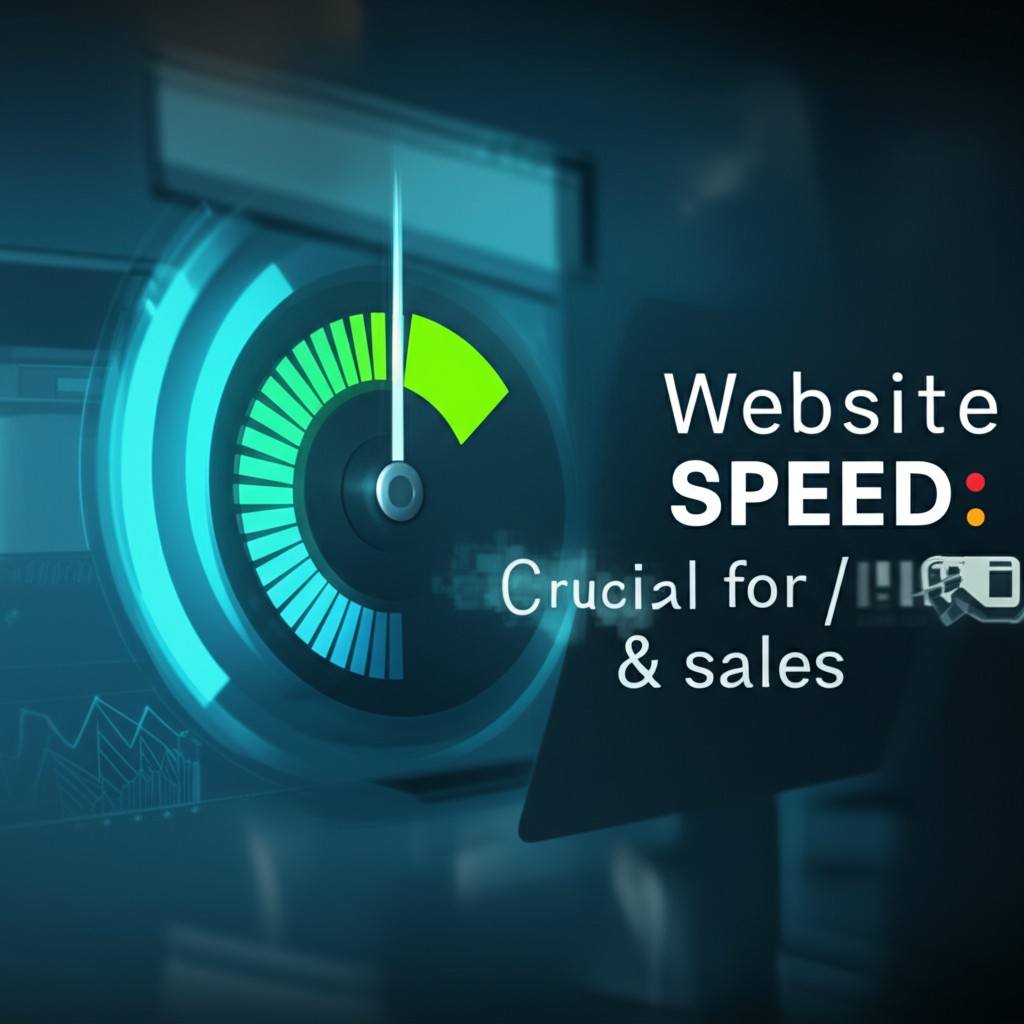- Why Website Speed Matters for SEO
- Impact on Search Engine Rankings
- Enhancing User Experience with Website Speed
- How Website Speed Affects Sales
- Reducing Cart Abandonment with Optimized Website Speed
- Improving Conversion Rates through Faster Loading Times
- Strategies to Improve Your Website Speed
- Optimize Images for Web Performance
- Leverage Browser Caching
- Minimize HTTP Requests
- Choose a Reliable Web Hosting Provider
- Implement a Content Delivery Network (CDN)
- Website Speed Testing & Monitoring
Website Speed: Crucial for SEO & Sales
Website speed is a critical factor for both search engine optimization (SEO) and sales. In today’s fast-paced digital world, users expect websites to load quickly and efficiently. A slow website can lead to a poor user experience, increased bounce rates, and ultimately, lost revenue. This article will explore the importance of website speed, its impact on SEO and sales, and practical strategies to improve your website’s performance.
Why Website Speed Matters for SEO

Google and other search engines prioritize user experience. A slow-loading website contributes to a negative user experience, signaling to search engines that the site may not be providing high-quality content or a seamless browsing experience. Subsequently, this can negatively impact your website’s ranking in search results.
Impact on Search Engine Rankings
Website speed is a confirmed ranking factor for Google’s mobile-first indexing. This means if your mobile site loads slowly, it will likely rank lower in search results, reducing visibility to potential customers. Even for desktop searches, speed plays a vital role in determining where your site appears on the search engine results page (SERP). A faster website is more likely to rank higher, increasing organic traffic and brand visibility.
Enhancing User Experience with Website Speed
Beyond impacting SEO, website speed directly influences user experience. A slow website can frustrate users, causing them to abandon the site before even engaging with its content. This leads to higher bounce rates, which is a metric that measures the percentage of visitors who leave a website after viewing only one page. A high bounce rate indicates poor user engagement and can further negatively affect your SEO. Conversely, a fast-loading website provides a seamless and enjoyable user experience, encouraging visitors to explore more pages, spend more time on the site, and ultimately convert into customers.
How Website Speed Affects Sales
The impact of website speed extends beyond SEO, directly influencing your bottom line. A slow website can significantly impact sales by deterring potential customers from completing purchases.
Reducing Cart Abandonment with Optimized Website Speed
Slow loading times during the checkout process can lead to cart abandonment. When customers experience delays or frustration while trying to make a purchase, they are more likely to abandon their carts and go elsewhere. Optimizing your website speed can streamline the checkout process, increase conversions, and ultimately boost sales.
Improving Conversion Rates through Faster Loading Times
Studies have shown a strong correlation between website speed and conversion rates. Even a one-second delay in page load time can result in a significant drop in conversions. A faster website provides a more positive user experience, encouraging visitors to complete desired actions, such as making a purchase, signing up for a newsletter, or filling out a contact form.
Strategies to Improve Your Website Speed
Optimizing your website speed involves a combination of technical improvements and strategic choices. Here are some key strategies to consider:
Optimize Images for Web Performance
Large image files can significantly slow down your website. Optimizing images by compressing them without compromising quality can drastically improve page load times. Consider using image formats like WebP, which offer superior compression and quality compared to traditional formats like JPEG and PNG.
Leverage Browser Caching
Browser caching allows users’ browsers to store certain website files locally, so they don’t need to be downloaded every time they visit the site. This can significantly improve page load times for returning visitors.
Minimize HTTP Requests
Each element on your website, such as images, scripts, and stylesheets, requires a separate HTTP request. Reducing the number of these requests by combining files and minimizing unnecessary elements can improve website speed.
Choose a Reliable Web Hosting Provider
Your web hosting provider plays a crucial role in your website’s performance. Choosing a reliable provider with fast servers and optimized infrastructure is essential for ensuring optimal website speed.
Implement a Content Delivery Network (CDN)
A CDN distributes your website’s content across multiple servers geographically closer to your users. This reduces latency and improves page load times, especially for users located far from your server’s location.
Website Speed Testing & Monitoring
Regularly testing and monitoring your website speed is essential to identify potential issues and track your progress. Tools like Google PageSpeed Insights, GTmetrix, and Pingdom Website Speed Test provide valuable insights into your website’s performance and offer recommendations for improvement. By consistently monitoring your website speed and implementing the necessary optimizations, you can ensure a fast, engaging, and profitable online presence. The investment in website speed optimization is an investment in both user experience and your business’s success.











Leave a Reply